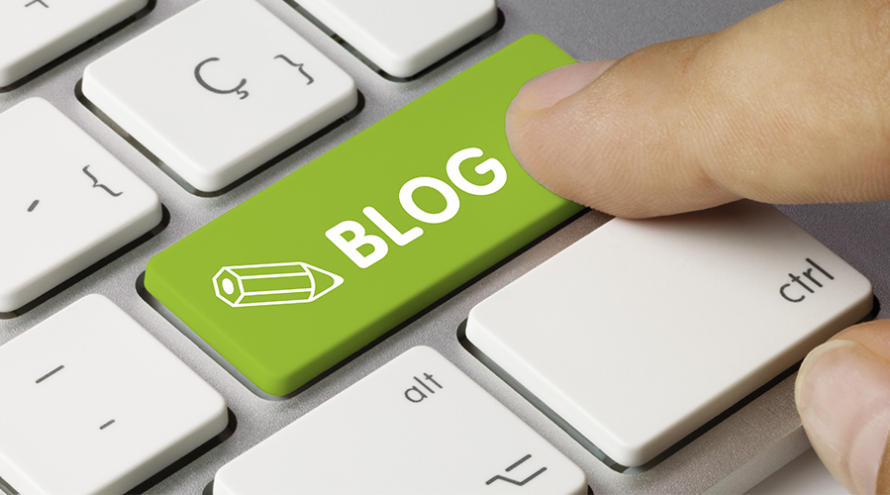-
Authoradmin
-
Comments0 Comments
-
Category
This article talks about the feelings ie positive feelings and negative feelings and how unexpressed negative feelings lead to strain, a negative aspect of stress. It also talks about the importance of accurate and effective expression of feelings. When the individual is in touch with his own feelings, it gives him a clear idea about his optimal level of stress which is constructive in nature. Awareness of one’s own feelings offers a sure rudder for keeping oneself in harmony. As this optimal stress level differs from person to person, stress SWOT analysis helps an individual to understand his unique position with respect to stress management. Apart from Stress SWOT analysis, Cognitive-behavioural methods are also found to be the effective methods to reduce stress. This article also discusses the link between heart and our emotions. Our mind and heart must be kept in proper form by handling negative feelings, emotions and strain in an effective way. That is the ‘bottom line” of stress management.
The person who carries the feelings carries the problem too.. So before dealing with the problem it is very essential to become sensitive to our own feelings. Origin of any feeling is a ‘need’. If the need do get satisfied, the person experiences a positive feeling. On the other hand, if the need does not get satisfied the person experiences a negative feeling. Feelings are usually followed by an action or behaviour.
For an example, a person who feels sad may cry out. In which “Sadness” is a feeling and “crying out” is the behaviour. Feelings of anger or frustration that are not expressed in an acceptable way may lead to hostility, a sense of helplessness and depression. Although the concept of communication and “letting your feelings out” has been so excessively promoted and parodied, still many do not know to express their feelings.
Expressing feelings does not mean venting frustration on family members and subordinates, boring friends with emotional stories, or wallowing in self-pity. We have to stop thinking of our feelings as irrelevant and messy, and realize we are in fact highly differentiated, and feelings are the nuanced patterns of reaction, knowable sources of information.
In general, the words feelings and emotions are used interchangeably. But there is a difference between these words. Feeling and a reaction/ behaviour together are referred as Emotion. Feelings need not be overt, but emotions are overt. We may not be sure of a person’s feeling like whether he is sad or angry unless he expresses it. But we can understand that he is sad if that person cries out. It is always healthy to express feelings as early as possible. Expressing one’s feelings solves only half of the communication puzzle. Learning to listen, empathize, and respond to others with understanding is also important to reduce stress.
Here are few guidelines to express one’s feelings:
- Try to be specific rather than general about how you feel.
- Feelings can be classified as positive feelings and negative feelings. Positive feelings are enthusiastic, vibrant, hopeful, delighted, glad, relieved, comfortable etc. whereas negative feelings are provoked, puzzled, disappointed, worried, annoyed, nervous etc.Instead of using vague terms like ‘I feel good’, be specific about how you feel. ‘I am excited’, ‘I am relaxed’ etc.
- Specify the degree of the feelings that will reduce the chances of being misunderstood.Rather than saying ‘I am angry’, it is better to say ‘I am little irritated’ ‘I am little disappointed’.
- When expressing negative feelings, first describe the specific behaviour you don’t like then your feelings. This helps to prevent the other person from becoming immediately defensive and help to maintain good interpersonal relationships.
Accurate and effective Expression of feelings helps the person to become stress free or stress less. Or else unexpressed negative feelings bottled up within the person and take the form of stress which is destructive in nature. Of the bodily organs, the heart plays a particularly important role in our emotional experience. As we experience feelings like anger, frustration, anxiety and insecurity, our heart rhythm patterns become more erratic. These erratic patterns are sent to the emotional centers in the brain, which it recognizes as negative or stressful feelings. These signals create the actual feelings we experience in the heart area and the body. The erratic heart rhythms also block our ability to think clearly. These emotions create a chain reaction in the body — stress hormone levels increase, blood vessels constrict, blood pressure rises, and the immune system is weakened. If we consistently experience these emotions, it can put a strain on the heart and other organs, and eventually lead to serious health problems. Many studies have found that the risk of developing heart disease is significantly increased for people who often experience stressful emotions.
One of the most useful definitions of stress is as follows:
“Stress is experienced when there is an awareness of a substantial imbalance between demand and capability under conditions where failure to meet the demand is perceived to have unwanted consequences”.
But stress can also be positive and negative. The negative effect of stress is called strain. Strain may result in Physiological and Behavioural Symptoms like rise in blood pressure, Tendency to cry easily, smoking, use of drugs and alcohol, decreased involvement in others etc, Affective symptoms like irritability, depression, jealousy, decreased frustration, tolerance etc, cognitive symptoms like forgetfulness, poor judgements, poor conciliation, reduced creativity, diminished problem solving etc and spiritual symptoms like not performing religious customs, disbelief in religion, detach from cultural and religious relationships. Negative stress acts as a depressant and may leave us feeling bored or dejected on the other hand excessive stress may leave us feeling ‘tied up in knots’.
Positive stress adds anticipation and excitements to life and we all thrive under a certain amount of stress. It also alerts us to a threat and increases our level of arousal and activation which can help us to be more effective in coping with the threat. If stress is successfully reduced, the person experiences a relaxation of arousal and increased confidence in being able to handle future stresses. HeartMath’s research shows that when we experience heart-felt emotions like love, care, appreciation and compassion, the heart produces a very different rhythm. Harmonious heart rhythms, which reflect positive emotions, are considered to be indicators of cardiovascular efficiency and nervous system balance. This lets the brain know that the heart feels good and often creates a gentle warm feeling in the area of the heart. Learning to shift out of stressful emotional reactions to these heartfelt emotions can have profound positive effects on the cardiovascular system and on our overall health. It is easy to see how our heart and emotions are linked and how we can shift our heart into a more efficient state by monitoring its rhythms.
When we become aware of our feelings, and the ways to expressing our feelings, then we become conscious of our optimal level of stress. There is no single level of stress that is optimal for all people. We are individual creatures with unique potentials. What is distressing to one may be a joy to another. Even to a same stressor different people will have different physiological, behavioural, affective or cognitive symptoms.
Hence, managing stress also differ form person to person. There is no absolute right way to manage stress. Our goal is not to eliminate stress but to learn how to manage it and how to use it to help us. The best approach is to access the specific situation, alter the method and fit it to that particular situation and then monitor its effectiveness. The major goal of managing stress is simple to enable the individual to function at his or her optimal level in a healthy and positive manner. Balance is a key concept in an integrated approach to stress management. A common misconception among both therapists and the client is that the goal of stress management is to minimize or eliminate stress. Although this may be appropriate in some instances, a more general concern is that of achieving the proper balance of stress. One must balance the individual personal resources against the demands made upon him or her. In order to understand the personal resources, a technique called stress SWOT analysis can be used. It is a very unique technique used especially with youth and women to cope with stressful situation.
Phase I – Strengths:
Before doing the SWOT analysis one has to identify unrelieved stress and being aware of its effect on our lives. Then start by listing your strengths like,
+ your personal strengths: your potentials, things you are good at and people respect you for.
+ your support network :family, friends, professional, government services powerful contacts, your team, co-workers etc
+ The resources you can draw on: money, assets, power.
Then using your strengths (all types) and having identified unrelieved stress brainstorm how you can practically cope up with the situation. You can also use your prior experience where you managed stress well. Use those practical skills as your stress management strengths like being assertive, emotionally stable etc.
Phase II – Weaknesses:
The stress reaction is triggered by your perception of danger that is Physical danger and/or emotional danger. List your personal weaknesses and the limitations in your position.
+ Personal weaknesses – areas where you are aware that you are not strong or things that people often criticize you.
-+Lack of resources (money, people, material etc) – what other people at your level or age access to these resources or absence of these resources have an impact on you.
-+Bad situations – you are facing or experiencing problems with your job or relationships
.
Challenge these weaknesses rationally that they are fair and genuine. Work through the stress diary again, looking at the times where you did not handle stress well. Identify where you have problems managing stress. Analyse the situation and reasons, for not managing the stress in relation with the resources available. By cataloguing all of these, you are identifying possible areas of change in your life and identify the new skills to be developed.
Phase III -Opportunities:
Brainstorm the opportunities that are available to you. Look for opportunities to build your physical resources and to maintain emotional resources. Using your strengths that are identified and the opportunities available, work on your weaknesses to develop new skills that are required to manage the stress that you experience. That is, consider the real world, practical opportunities that would be open to you and try to take advantage of these opportunities to improve your stress management strategies.
Phase IV-Threats:
Unidentified or uncovered weaknesses can be a threat to your physical, behavioural and emotional wellbeing. Having realized the consequences of unmanaged stress, one should use threat as a potent source of motivation to learn effective stress management techniques.
Apart from Stress SWOT analysis, Cognitive-behavioural methods are the most effective ways to reduce stress. They include identifying sources of stress, restructuring priorities, changing one’s response to stress, and finding methods for managing and reducing stress.
Using Humour: Humour is a very effective mechanism for coping with acute stress. Keeping a sense of humour during difficult situations is a common recommendation from stress management experts. Laughter not only releases the tension of pent-up feelings and helps keep perspective, but it appears to have actual physical effects that reduce stress hormone levels. It is not uncommon for people to recall laughing intensely even during tragic events, such as the death of a loved one, and to remember this laughter as helping them to endure the emotional pain.
Effectively coping with life’s problems and failures requires realistic expectations. Psychologists call these expectations are judgements appraisals. Life events (such as Child’s underperformance, traffic bottlenecks or the boss’s bad-tempered voice) aren’t a problem unless we appraise or perceive them as such. So if these appraisals are realistic, we’ll be better able to react to the events of day-to-day life. Appraisals are a product of our belief system. If we hold unrealistic, inflexible beliefs then the appraisals we make may not be the most appropriate for the situation. Irrational beliefs often include ‘musts’ and ‘shoulds’, with an emphasis on perfection. Identify your musts. There are three core “musts.”
“Must” 1-(a demand on yourself):I must do well and get approval, or else I am worthless.” This demand causes anxiety, hopelessness, and lack of assertiveness.
“Must” 2-(a demand on others): you must treat me reasonably, or else you are not good.” This demand leads to resentment, hostility, and violence.
“Must” 3-(a demand on situation):”Life Must be fair, easy, and smooth or else it’s awful. This thinking is associated with hopelessness, procrastination, and addictions.
Until you discover the “must” it is not possible to reduce your stress level. Begin by asking yourself: “What’s the evidence for my `must?’ “, “How is it true?” And then by seeing: “There’s no evidence.” “My `must’ is entirely false.” Make your view “must”-free.
Replace your “must” statements with “prefer” as below,
Preference 1: “I strongly PREFER to do well and get approval, but even if I fail, I will accept myself fully,”
Preference 2: “I strongly PREFER that you treat me reasonably, kindly, and lovingly, but since I don’t run the universe, and it’s a part of your human nature to err, I, then, cannot control you,”
Preference 3: “I strongly PREFER that life be fair, easy, and hassle-free, and it’s very frustrating that it isn’t, but I can bear frustration and still considerably enjoy life.”
Though these above said techniques helpful in their own right, they are not the “bottom line” on stress management. Our mind and heart must be kept in proper form by handling negative feelings, emotions and strain in an effective way. The mind is said to operate at two levels-intellectual and emotional. To achieve a state where you can control your excess emotions, the mind must be trained to think clearly. By keeping our mind and heart, less affected by stress or negative feelings we can improve our health, increase our energy, and promote the clarity of our mind and the creativity and orderliness of our thinking. That is the ‘bottom line” of the stress management. By doing this, one can prevent new stress from accumulating today and eliminate stress built up from the past. In general, good self-esteem helps us bear up to the negative effects of day-to-day stress. Also, having support from other people goes a long way to alleviate the hold of stress – on both our feelings and psychological wellbeing.
The 10 Secrets of Balancing Stress In Our Lives
1. Have a mind that is open to everything and attached to nothing.
2. Don’t die with your music still in you. Live your life to the fullest.
3. Don’t give all yourself away to others.
4. Silence is the way to grow. Listen to yourself, listen to others.
5. Surrender your past, don’t make excuses, learn and move on.
6. Surrender your ego, learn from your mistakes.
7. Give up any anger or resentment that may be inside of you.
8. Live by the golden rule. Is this how you want to be remembered?
9. Live for the present moment. It is a precious gift.
10. Stay away from negative thoughts and people.
Source: Wayne Dywer
References:
- www.mindtools.com
- www.guideimageryinc.com
- www.stress.org
- www.msnbc.msn.com
Leave A Comment Cancel reply
Recent Comments
Archives
- April 2024
- March 2024
- February 2024
- October 2023
- September 2023
- June 2023
- October 2022
- February 2022
- December 2021
- November 2021
- January 2021
- December 2020
- August 2020
- May 2020
- October 2019
- September 2019
- July 2019
- January 2019
- November 2018
- October 2018
- July 2018
- June 2018
- May 2018
- April 2018
- February 2018
- December 2017
- November 2017
- May 2017




